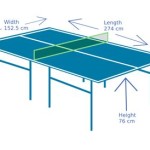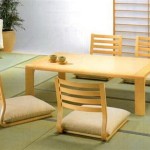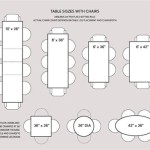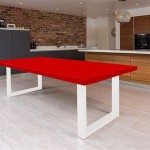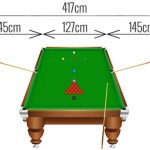How to Refurbish a Coffee Table: A Step-by-Step Guide
Refurbishing a coffee table is a rewarding project that can breathe new life into a worn piece of furniture, transforming it into a stylish and functional centerpiece for a living room. This article provides a comprehensive guide to refurbishing a coffee table, covering essential preparation steps, techniques for repairing damage, and methods for applying a new finish.
Assessing the Coffee Table's Condition and Planning the Refurbishment
The first step in refurbishing a coffee table involves a thorough assessment of its current state. This evaluation determines the scope of the project and the necessary materials and tools. Examine the table for any signs of damage, such as scratches, dents, water rings, loose joints, veneer damage, or structural instability. Note the existing finish type (e.g., varnish, lacquer, paint) as this will influence the removal process. Consider the desired outcome for the refurbished table – its intended style, color, and function – as these factors will guide the choice of replacement finishes, hardware, and any potential modifications.
Based on the assessment, create a detailed plan that outlines the steps involved in the refurbishment process. This plan should specify the repairs that need to be made, the materials required, the tools necessary, and the timeline for completion. Having a clear plan helps to ensure a smooth and efficient refurbishment process and minimize the risk of errors or omissions.
Gather all necessary materials and tools before starting the refurbishment. This includes items such as sandpaper in various grits (coarse, medium, fine), stripping agent (if necessary), wood filler, wood glue, clamps, a scraper, a sanding block or orbital sander, tack cloths, paintbrushes or spray equipment, and the chosen finish (e.g., stain, paint, varnish, polyurethane). Safety gear, including safety glasses, gloves, and a respirator, is also essential.
Preparing the Coffee Table for Refinishing
Proper preparation is crucial for achieving a professional-looking finish. This stage involves cleaning the table, removing the existing finish, and repairing any damage. Begin by thoroughly cleaning the coffee table with a mild detergent and water to remove any dirt, dust, grease, or wax. Allow the table to dry completely before proceeding.
Next, remove the existing finish. The method used will depend on the type of finish. For painted surfaces, sanding may be sufficient. Start with a medium-grit sandpaper (e.g., 120-grit) to remove the bulk of the paint, then switch to a finer grit (e.g., 220-grit) to smooth the surface. For tougher finishes like varnish or lacquer, a chemical stripping agent may be necessary. Apply the stripper according to the manufacturer's instructions, allowing it to soften the finish. Then, use a scraper to carefully remove the softened finish. Multiple applications may be required for thick or stubborn finishes. After stripping, neutralize the surface according to the stripper's instructions to ensure proper adhesion of the new finish.
Once the old finish has been removed, inspect the table for any damage that needs to be repaired. Use wood filler to fill in any scratches, dents, or gouges. Apply the filler according to the manufacturer's instructions, allowing it to dry completely. Once dry, sand the filler smooth, blending it seamlessly with the surrounding wood. For loose joints, apply wood glue to the joint and clamp it tightly until the glue dries completely. For more significant structural repairs, consider using wood screws or dowels for added strength.
After repairing any damage, thoroughly sand the entire table surface to create a smooth and even base for the new finish. Start with a medium-grit sandpaper (e.g., 150-grit) to remove any imperfections and smooth the surface. Then, switch to a finer grit (e.g., 220-grit) to further refine the surface and prepare it for the finish. Sand in the direction of the wood grain to avoid scratching the surface. After sanding, remove all sanding dust with a tack cloth.
Applying the New Finish
The application of the new finish is the final step in refurbishing the coffee table. This stage involves selecting the appropriate finish based on the desired look and durability, and then applying it carefully and evenly. There are several types of finishes to choose from, including stain, paint, varnish, polyurethane, and oil-based finishes. Each type of finish has its own advantages and disadvantages in terms of appearance, durability, and ease of application.
If using a stain, apply it evenly to the wood surface with a brush, cloth, or sponge. Allow the stain to penetrate the wood for the recommended time, then wipe off any excess stain with a clean cloth. The longer the stain is left on, the darker the color will be. Allow the stain to dry completely before applying a topcoat.
If using paint, apply it in thin, even coats with a brush, roller, or spray gun. Allow each coat to dry completely before applying the next coat. Sand lightly between coats with fine-grit sandpaper (e.g., 320-grit) to create a smooth finish. Apply at least two coats of paint for good coverage and durability.
For varnish or polyurethane, apply it in thin, even coats with a brush or spray gun. Allow each coat to dry completely before applying the next coat. Sand lightly between coats with fine-grit sandpaper (e.g., 320-grit) to remove any imperfections and create a smooth finish. Apply at least two to three coats for good protection and durability.
When applying any finish, work in a well-ventilated area and wear appropriate safety gear, including a respirator. Follow the manufacturer's instructions carefully for best results. Allow the finish to dry and cure completely before using the coffee table. The curing time can vary depending on the type of finish and the environmental conditions.
After the finish has cured, inspect the table for any imperfections. If necessary, lightly sand any imperfections with fine-grit sandpaper and apply a final coat of finish. Once the final coat has dried completely, the refurbished coffee table is ready to be placed in its new home.
By following these steps, it is possible to successfully refurbish a coffee table, transforming it from a worn piece of furniture into a beautiful and functional addition to any living room. Paying careful attention to detail, using high-quality materials, and taking the time to do the job properly will result in a professional-looking finish that will last for years to come.

Diy Refurbished Wood Coffee Table The Boondocks Blog

20 Best Coffee Table Restoration Ideas Redo Furniture Painted

Coffee Table Make Over Before And After Furniture Renovation Refurbished Tables Makeover

How To Re A Coffee Table Better Homes And Gardens

Diy Refurbished Wood Coffee Table The Boondocks Blog

Rustic Coffee Table A Makeover Redo Tables

How To Re A Coffee Table Eys

How To Makeover An Ugly Laminate Coffee Table A Erfly House

How To Easily Tighten Up Coffee Table Legs Fix Wobbly On

Farmhouse Coffee Table Makeover

